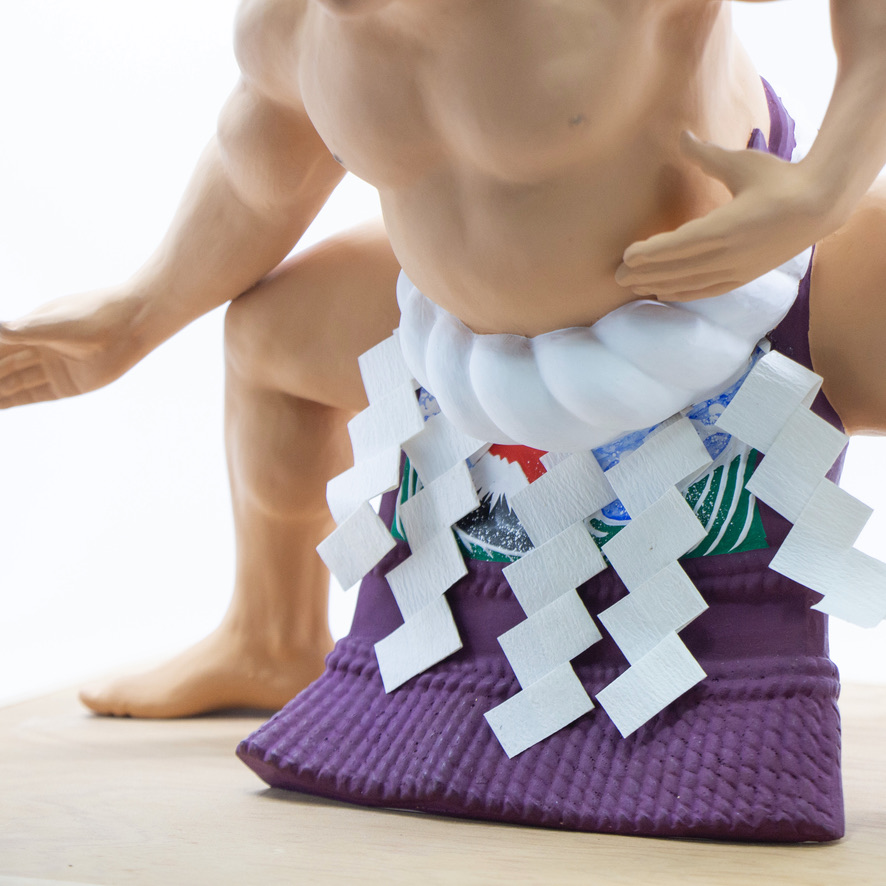[ What is Sumo ? ]
Do you know sumo? Sumo wrestling, one of Japan’s traditional cultures, is a popular national sport with many fans even today. This time, I will introduce the history of sumo wrestling and information that is good to know.
○ Origin of sumo wrestling
Sumo wrestling is a traditional sport that arose from strength competitions and wrestling, which are manifestations of human fighting instincts. Similar sports have been played all over the world since ancient times. Sumo wrestling in Japan has its origins in the myth of a power contest in the Kojiki (712) and Nihon Shoki (720). Sumo wrestling has been held every year as a festival ritual to foretell the harvest of the year’s crops, which later became a court event and has continued for 300 years.
○Things to know to make watching a game more enjoyable
・” Shikofumi ”=raise each leg highly and stomp the ring
This action is not only a warm-up before tackling, but also an action to get rid of evil spirits in the ground. “Shiko” has the meaning of “ugly”, and is used to drive away ugly evil spirits from the ring.
・”Shio Maki” = throwing a handful of salt over the ring to purify the space
Sumo wrestlers sometimes throw salt before entering the ring. Throwing salt has the role of purifying evil spirits in the soil with salt, and it is an action to pray to the gods. Only after becoming a sekitori ( high ranking wrestler ) are allowed to enter the ring with salt sprinkled on them. Shio maki is also proof of being recognized as a full-fledged sumo wrestler.
・Chikaramizu = Power water to purify the body
Water in a bucket is placed on the side of the ring, and this is called “chikaramizu”. After throwing salt, the sumo wrestler who won the previous match pours a bucket of water on them and rinses their mouths to purify themselves. The paper used to wipe off the power water is called “chikaragami” and is placed next to the bucket.
・ Expression to fight fair and square “Chiri Chozu”
After clapping the hands, the wrestler’s unique action of spreading both hands out to the side is called ‘chirichozu’. It is said to be an expression of the will to fight fair and square with only one body, without weapons, and is also said to “cut the dust”.
![]() To see details more about sumo!
To see details more about sumo!
[ https://www.sumo.or.jp/En/ ]
[ 相撲とは・・・ ]
皆さん、相撲はご存知でしょうか?日本の伝統文化の一つである相撲は、現在でも多くのファンがいるほど人気の国技です。今回は、相撲の歴史と知っておくと良い情報についてご紹介します。
○相撲の起源
相撲は人間の闘争本能の発露である力くらべや取っ組み合いから発生した伝統あるスポーツです。これによく似た形態のスポーツは、古来世界各地で行われてきました。
日本の相撲の起源としては、古事記(712年)や日本書紀(720年)の中にある力くらべの神話があげられます。相撲はその年の農作物の収穫を占う祭りの儀式として、毎年行われてきており、これが後に宮廷の行事となり、300年続くことなりました。
○知っておくと、観戦が楽しくなること
・邪気を払う「四股踏み」
四股を踏む動作は、取り組み前のウォーミングアップでもありますが、土中にいる邪気を払う動作でもあります。「四股(しこ)」には「醜い」という意味があり、醜い邪気を踏んで土俵から追い払っているのです。
・土俵を清める「塩まき」
力士が土俵へ入る前に塩をまくことがあります。塩まきには土中の邪気を塩で清める役割があり、神へ祈りを捧げる動作です。塩をまいて土俵入りすることを許されるのは関取になってから。塩まきは、一人前の力士として認められた証でもあります。
・体を清める「力水」
土俵の側には桶に入った水が置かれおり、これは「力水(ちからみず)」と呼ばれます。塩をまいた後に、1つ前の試合で勝った力士から桶の水をつけてもらい、口をすすいで身を清めます。力水を拭き取る紙は「力紙(ちからがみ)」と呼ばれ、力水が入った桶の側に置かれています。
・正々堂々と戦う表明「塵手水」
柏手を打った後、両手を横に広げる力士独特の動作は「塵手水(ちりちょうず)」と呼ばれます。武器を持たず、体1つで正々堂々と戦う意思の表明であるといわれており、「塵(ちり)を切る」ともいわれます。
![]() 相撲に関する詳細はこちら!
相撲に関する詳細はこちら!
[ https://www.sumo.or.jp/En/ ]

